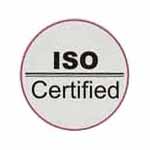
ISO Consultants
35,000 - 50,000 Per Certificate
Among the broad array of services, there exists Service of ISO Consultancy. We provide ISO Certification Services to add value to organizations by offering advice on appropriate areas of operation. The ISO 9001: 2000 consultancy Services Provided by us are available at reasonable rates. We invite you to come and become a part of our family and avail these excellent services.\n Estimated Time Frame Development Phase Time Schedule\n\nPhase I (8-10 Weeks)\nPhase II (4-6 Weeks)\nPhase III (8-10 Weeks)\nPhase IV Depends on the Certification Body (Generally 3-4 Weeks)\n\n (N.B.The fees shall be quoted, after the receipt of details indicted in Client Information Proforma). The Consultant would also ensure that AUDIT is completed satisfactorily well and document is accepted in Pre/Post AUDIT The Quality Manual and Processes are made in line with the International Standard. The other parameters are as per Modules indicated and we shall adhere to the time schedule. The development of a quality management system of your organization would involve the following phases: Phase I Exposure on ISO 9000 and Development of Quality System Procedures and Associated Documents\n\n\nAwareness programme on ISO 9000-2000 series of standards\nReview of Organization\'s Quality Policy\n--Review of Business Goals and identification of Objectives\n\n \n\n--Establishment of measurable objectives relating to Key Process areas\n\n \n\n--Review of the existing system in operation\n\n \n\nOutline of quality management system documentation\nDevelopment of a numbering system for documentation of the quality management system\nIdentification of quality management system procedures required\nDevelopment and writing of quality system procedures\nDesigning of work instructions\nIdentification and development of forms/formats\nIdentification of quality system records\n\n On completion of this phase the managers and supervisory personnel will have sufficient knowledge to appreciate how their particular operations fit into the requirements of ISO 9001 and the quality system procedures and associated documentation will be ready for implementation Phase II Development of Quality Manual\n\nWriting of the Quality Manual\nFinalization of the Company\'s Quality Policy\n\n On completion of this phase the Quality Manual will be ready. Phase III Installation and Evaluation of the Documented System\n\nTraining of internal quality auditors\nConducting a trial audit of the system\n\n It may be noted that staff training schedule will be conducted here itself as per detailed discussion with the management. On completion of this phase the system will be ready for application to the certification agency. Phase IV Certification Audit\n\nFinal audit by third party certification body\nAssisting in resolution of non conformities raised by authors of certification body\nCharting the follow up action on the report of certification body\n\n Main Advantages of ISO Certifications Symptoms of Poor Quality\n\nComplaints : you spend a lot of time dealing with (or avoiding) irate customers.\nTime : you never have enough time for the necessary and important work.\nHassle : There are always fires to put out.\nOverload : you always have too much to do.\nUnder-Load : Others dump their work to you.\nConfusion : No one seems to know what is going on.\nNeglect : No one wants to hear your views or problems.\n\n On completion of this phase your organization becomes certified to ISO-2000. What is Quality\n\nQuality is meeting customer requirements\nQuality is a concept that everyone agrees is important, but no one acts to achieve it in any tangible way\n\n Before Implementation of QMS\n\nAll businesses have an established way or system of doing businesses, likelihood is that system is quite effective, but informal and probably not documented.\nMeasurement of Quality in each process and overall for organization do not exists\nProblems as they are faced are handled no conscious efforts are made to prevent the recurrence\nUseful data wrt achievements and problems faced is not collected\nKnowledge is not preserved\nResponsibilities and authorities are unclear there are misunderstandings at times\nEmployees are not trained to be quality conscious, there are rejections / customer complaints due to poorly defined processes and negligence\nWhenever people change, training new person takes time\n\n After ISO 9001 Implementation Internal Improvements\n\nConfidence to management that the intended quality is being achieved and maintained\nClarity, uniformity in the working\nProcesses are controlled, such that non-conformances are prevented (not detected)\nPlanned continuous quality improvement efforts\nReduce production costs because money is no longer spent on waste and rework. The savings can be reinvested in new technology and in reducing the cost to the customer\n\n Recognition\n\nSome customers in are looking for the confidence that can be given by a business having a quality system\nIt establishes company\'s credibility among customers\n\n What is Process Improvement? Business is about people working with other people. customers, managers, staff, and suppliers. A quality process makes us look again at the way all these people work together with the challenge that it can and must be done better than before.\n\nCan we create more value and less waste in those processes\nCan they be made faster, more robust, practical, and more flexible?\n\n Symptoms of Good Quality\n\nHigh customer satisfaction\nRepeat orders reduced marketing costs\nFirst time right every time, - No reworks or wastages.\nIncreased sales and profits.\nLow attrition rate of employees. Good employees stay.\n\n Client Information Proforma Just complete the following profile Form and well send you our Proposal for consultancy training :\n\nName of Company\nOffice Address\nWorks Address(S)\nContact Person Name & Designation\nProduct Manufactured\nNo. of Employees\nTurnover\nDetails of any other Quality System already existing\nTarget date to achieve certification\nAny other relevant information\n